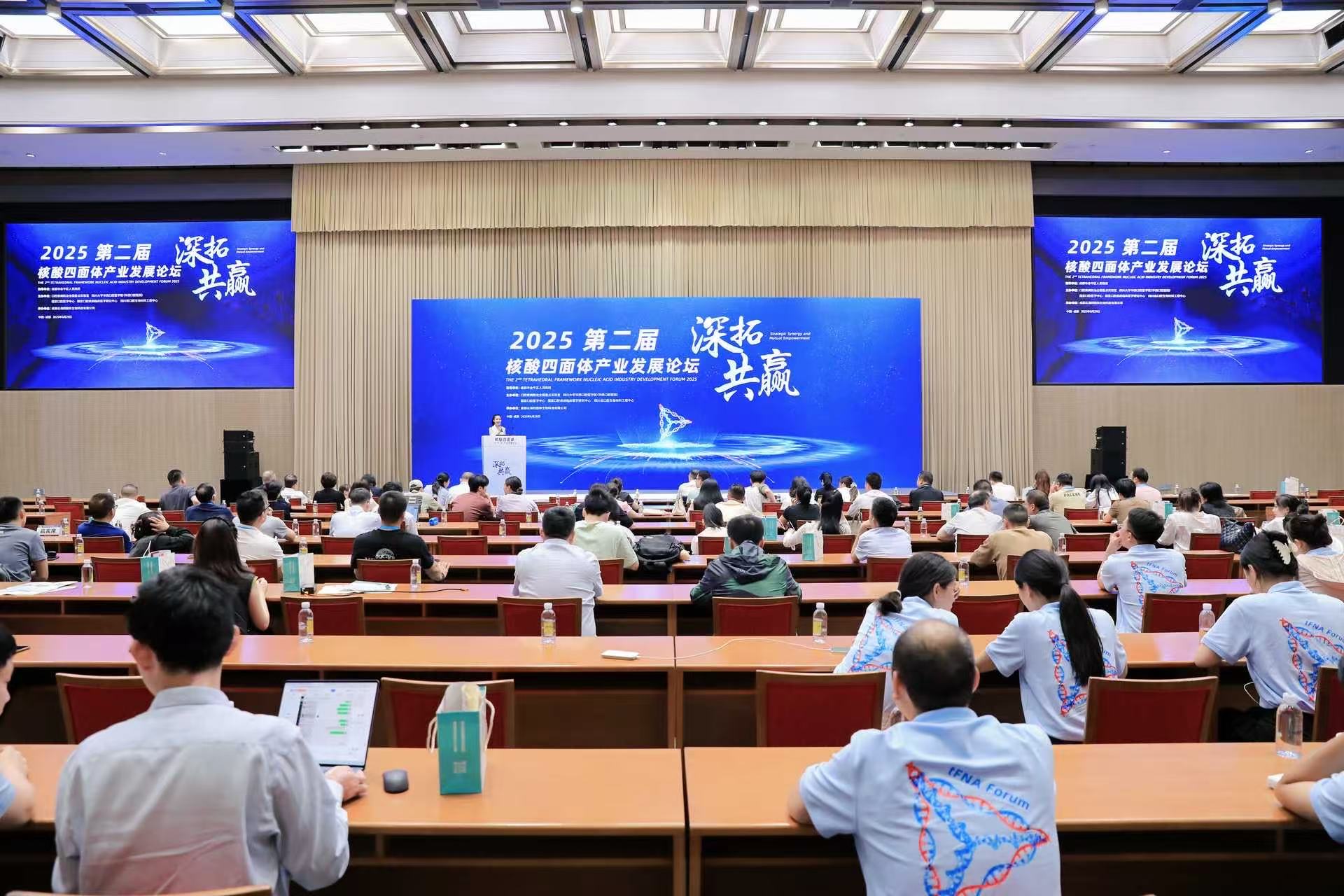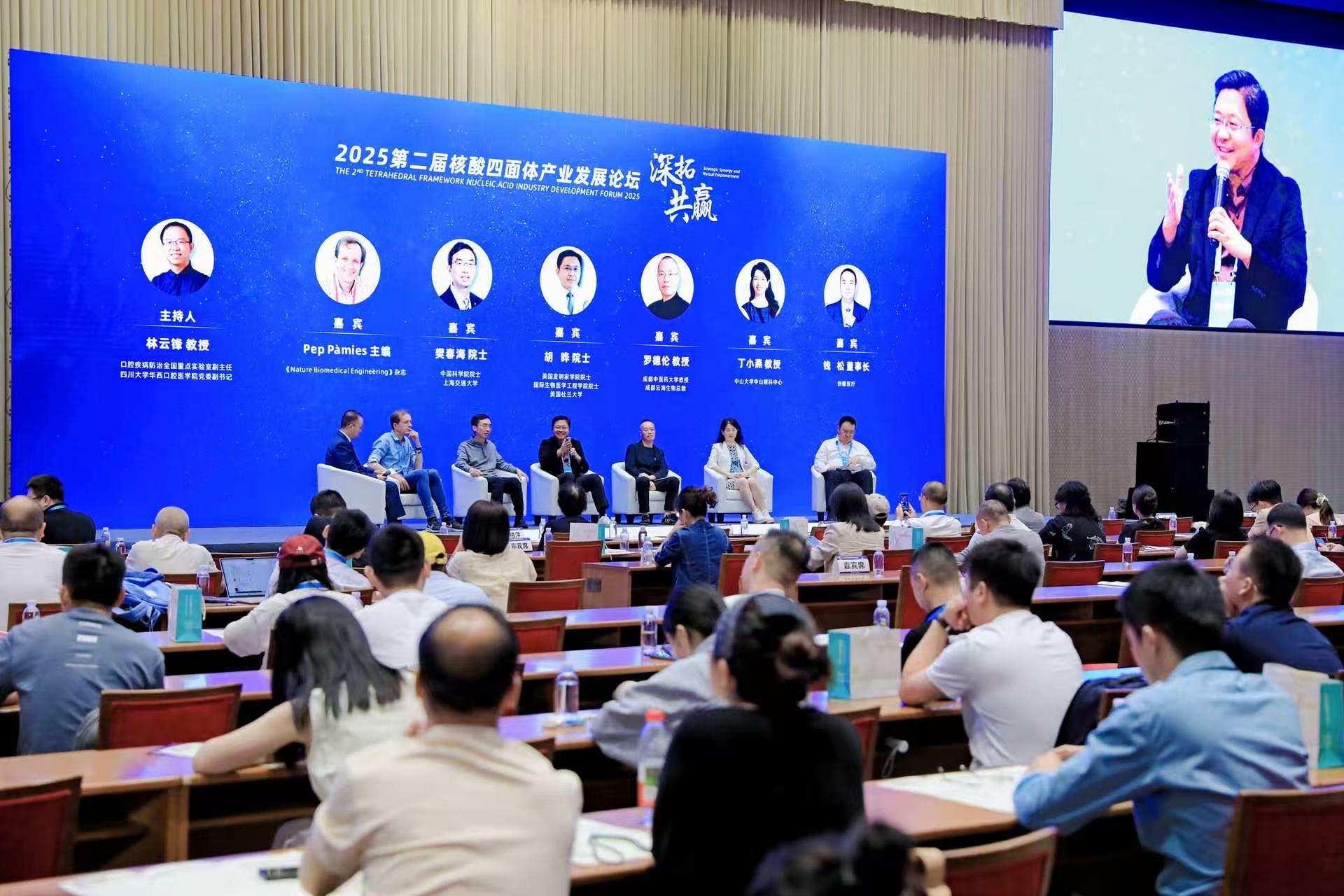The 2nd Tetrahedral Framework Nucleic Acid Industry Development Forum Held in Chengdu
2025-06-29
On June 29, the 12th DNA Nanotechnology Symposium of the Chinese Chemical Society and the 2025 2nd Tetrahedral Framework Nucleic Acid (tFNA) Industry Development Forum were successfully held in Chengdu. Focusing on the latest advances in tFNA technology, the forum brought together academicians, clinical researchers, and industry representatives from around the world to explore cutting-edge progress and future trends in nucleic acid nanotechnology, particularly the tFNA platform.

This forum was co-hosted by the State Key Laboratory of Oral Diseases, West China School of Stomatology of Sichuan University (West China Hospital of Stomatology), National Center for Stomatology, National Clinical Research Center for Oral Diseases, and Sichuan Provincial Engineering Research Center for Oral Biomaterials. It was organized by Chengdu Yunhai Tetrahedral Framework Biotechnology Co., Ltd. The event featured keynote speeches, roundtable discussions, and achievement exhibitions, highlighting the integrated development of technology, industry, and application.
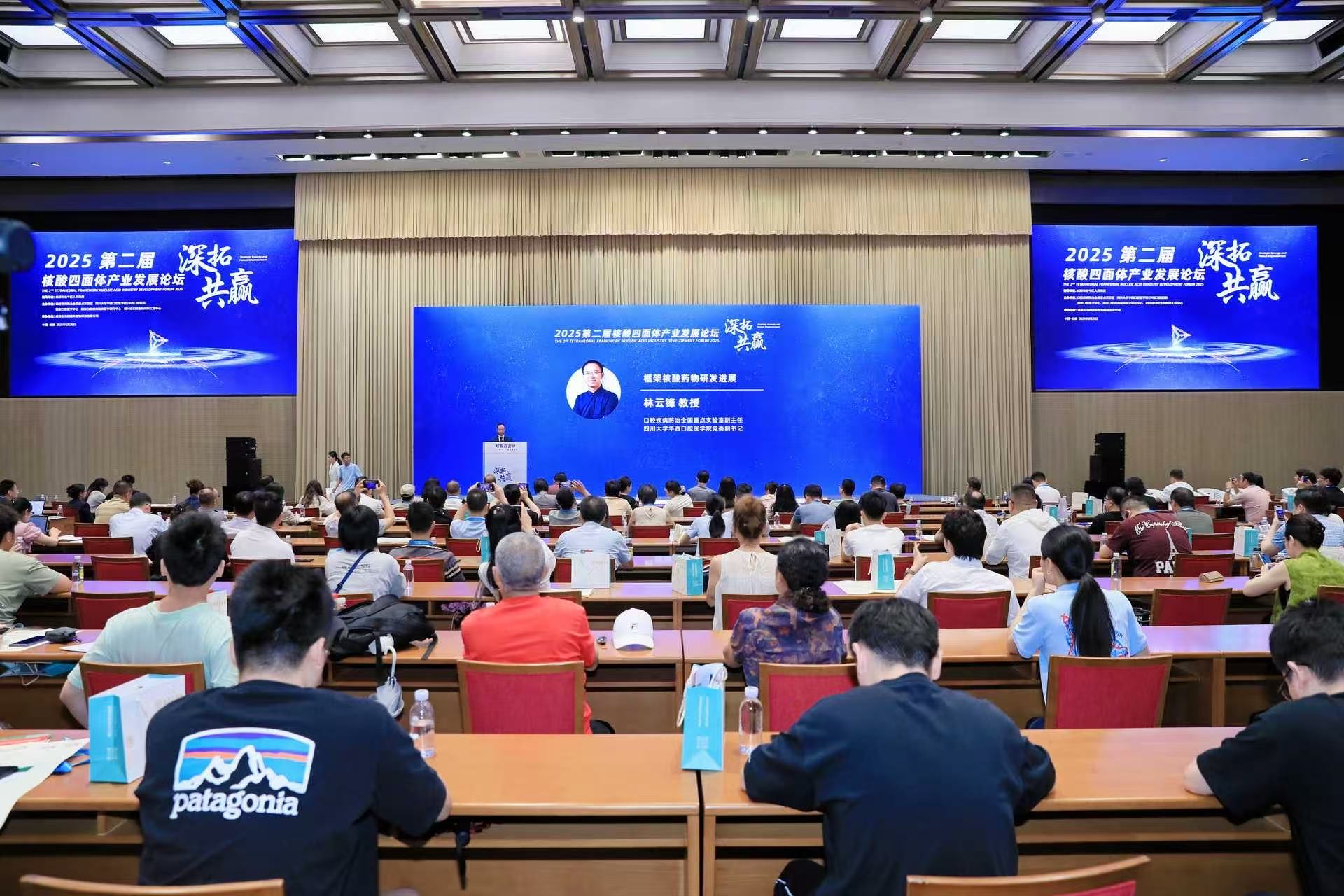
Since the successful launch of the inaugural tFNA Industry Development Forum in 2024, the technology has made a series of breakthroughs in fields such as nucleic acid structure design, intelligent drug delivery, and translational medicine. Over the past year, the tFNA platform has achieved substantial progress in ophthalmology, neurological diseases, and skin health, demonstrating strong translational potential and vast market prospects.

In her opening speech, Sichuan University Vice President Professor Ling Ye emphasized that tFNA technology, as a frontier innovation with disruptive potential, not only serves strategic national needs but is also poised to become a core driver for upgrading the biopharmaceutical industry. It offers new solutions for tackling major diseases and improving public health.
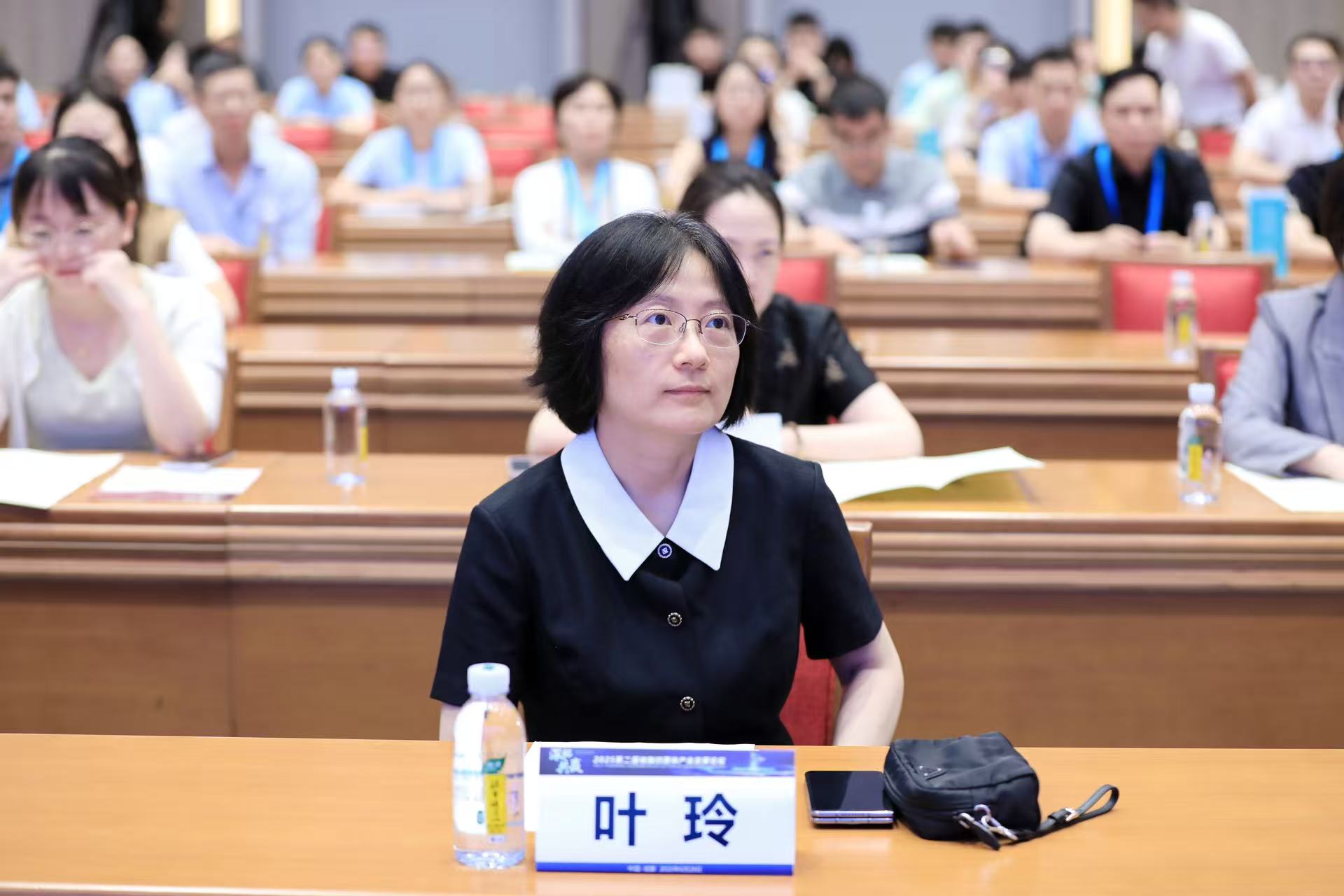
"Our university possesses unique strengths in biopharmaceutical R&D," she said. "We leverage our interdisciplinary capabilities as a century-old institution to build a comprehensive innovation ecosystem in biomedicine. Particularly in the field of framework nucleic acids, our research teams have made a leap from ‘following’ to ‘running alongside’ and even ‘leading’ in certain areas.”

She called on universities and research institutes to fully utilize their advantages in basic research and talent development to support enterprises with technological and human resources. At the same time, enterprises should leverage their strengths in commercialization and industrialization to transform academic research into real productivity. “Through deep collaboration between academia, industry, and research, we can better integrate resources and build a powerful force to drive the health industry forward.”

Academician Chunhai Fan of the Chinese Academy of Sciences remarked that, having worked in the field of DNA nanotechnology for two decades, he has witnessed the full journey of framework nucleic acid technology from basic research to clinical translation. He noted: “tFNA, in particular, with its unique structural programmability and biocompatibility, holds revolutionary potential in precision medicine and targeted drug delivery.”
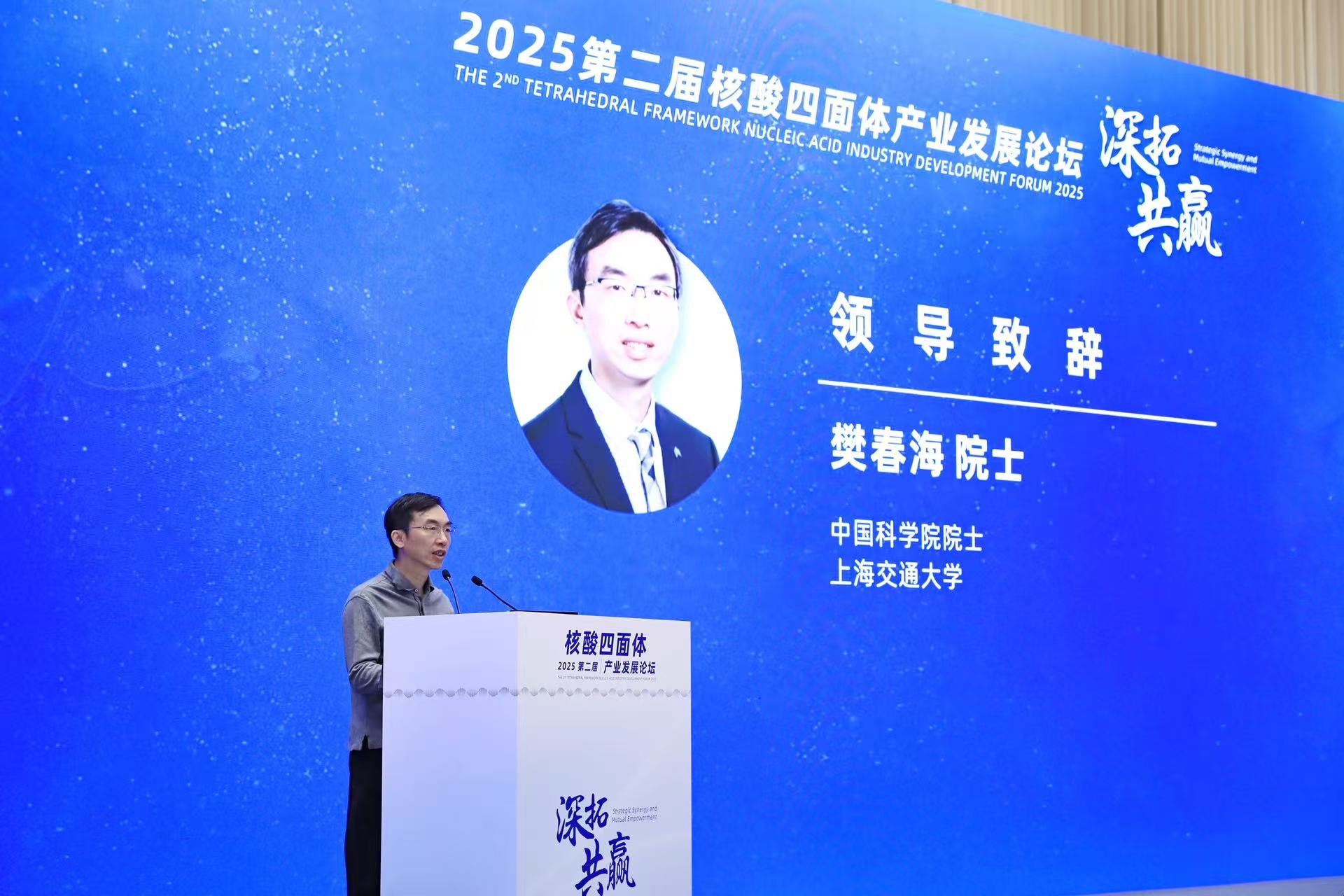
“What excites me the most is that we are no longer content with just laboratory innovation. tFNA technology is beginning to show its power in clinical applications — from tackling complex retinal diseases to fighting cancer and treating rare diseases — all with very encouraging progress,” Fan said. “This reaffirms our belief that transforming lab ‘golden ideas’ into ‘golden keys’ that safeguard people’s health is the proud mission of our generation of researchers.”
The tFNA structure, formed by the self-assembly of four single-stranded DNAs with specific sequences, possesses a precise 3D geometry, high rigidity, and excellent programmability. It has become a core carrier in next-generation intelligent drug delivery platforms.
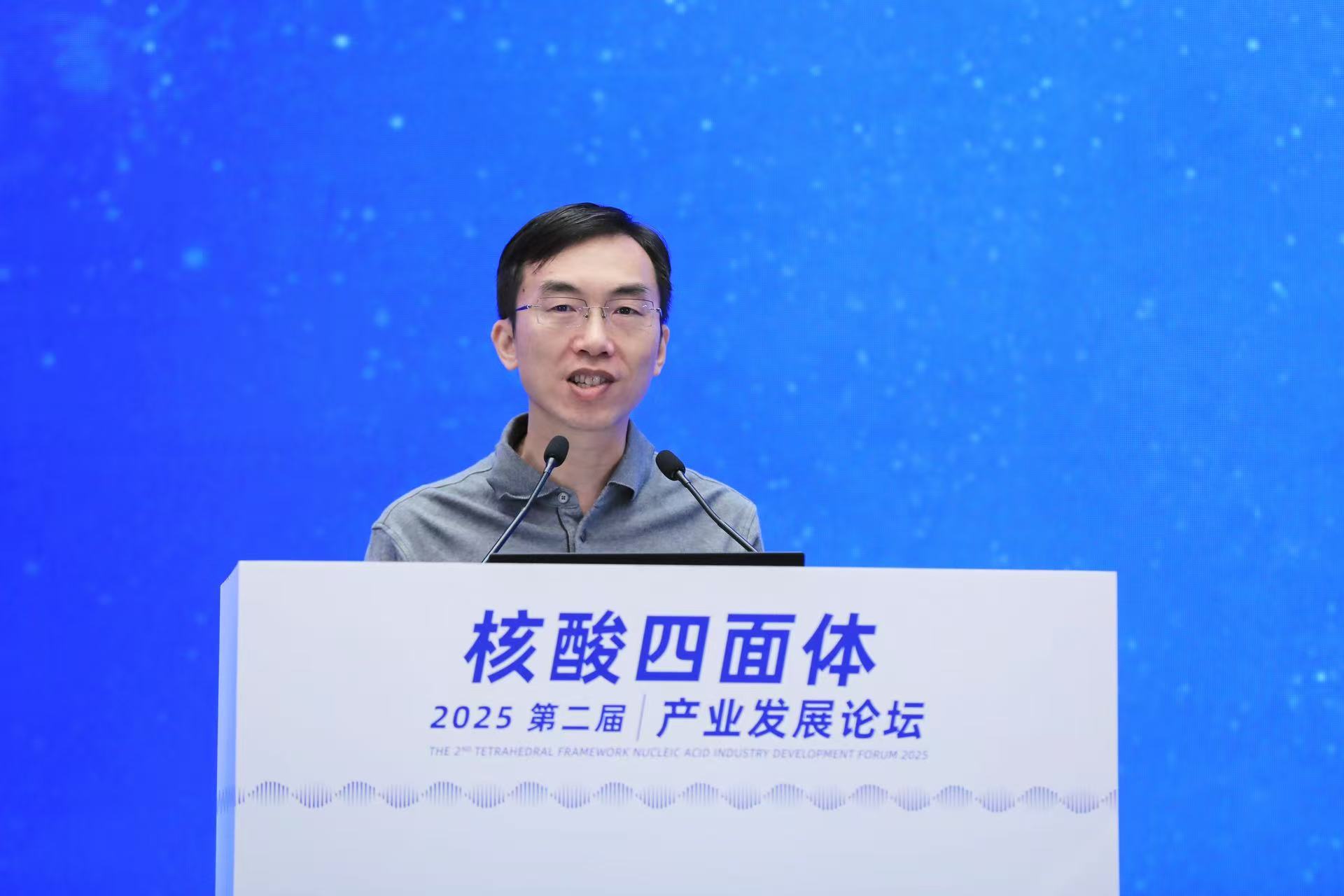
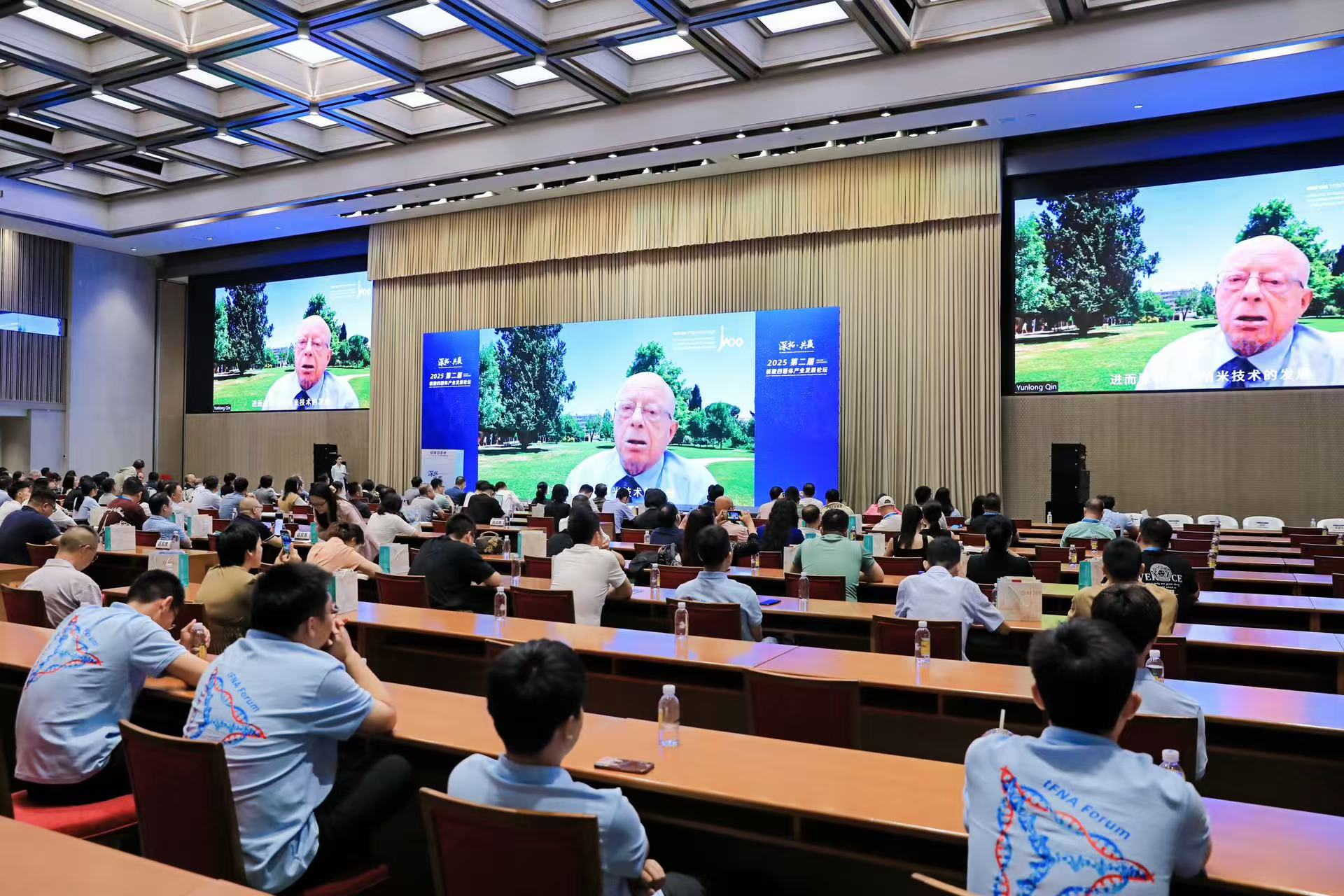

In ophthalmology, the tFNA platform is being used to precisely deliver therapeutic molecules to retinal lesions. In animal models of neovascular age-related macular degeneration, it has demonstrated significant efficacy. Relevant sustained-release hydrogel formulations are now in preclinical development. In the area of neurological diseases, tFNA enables nose-to-brain delivery of therapeutic molecules, with preclinical studies showing promising results in models of Alzheimer’s and Parkinson’s diseases.
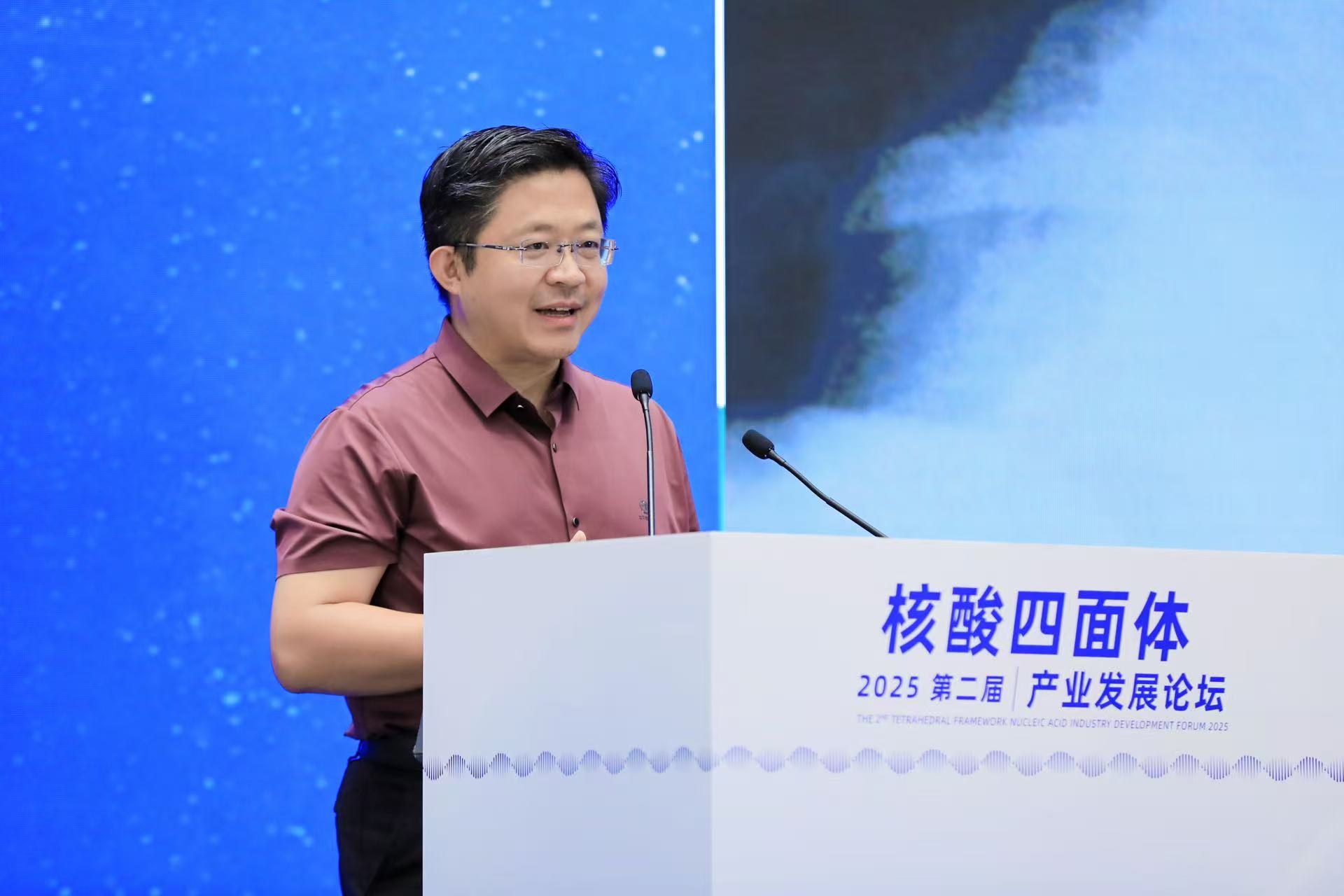

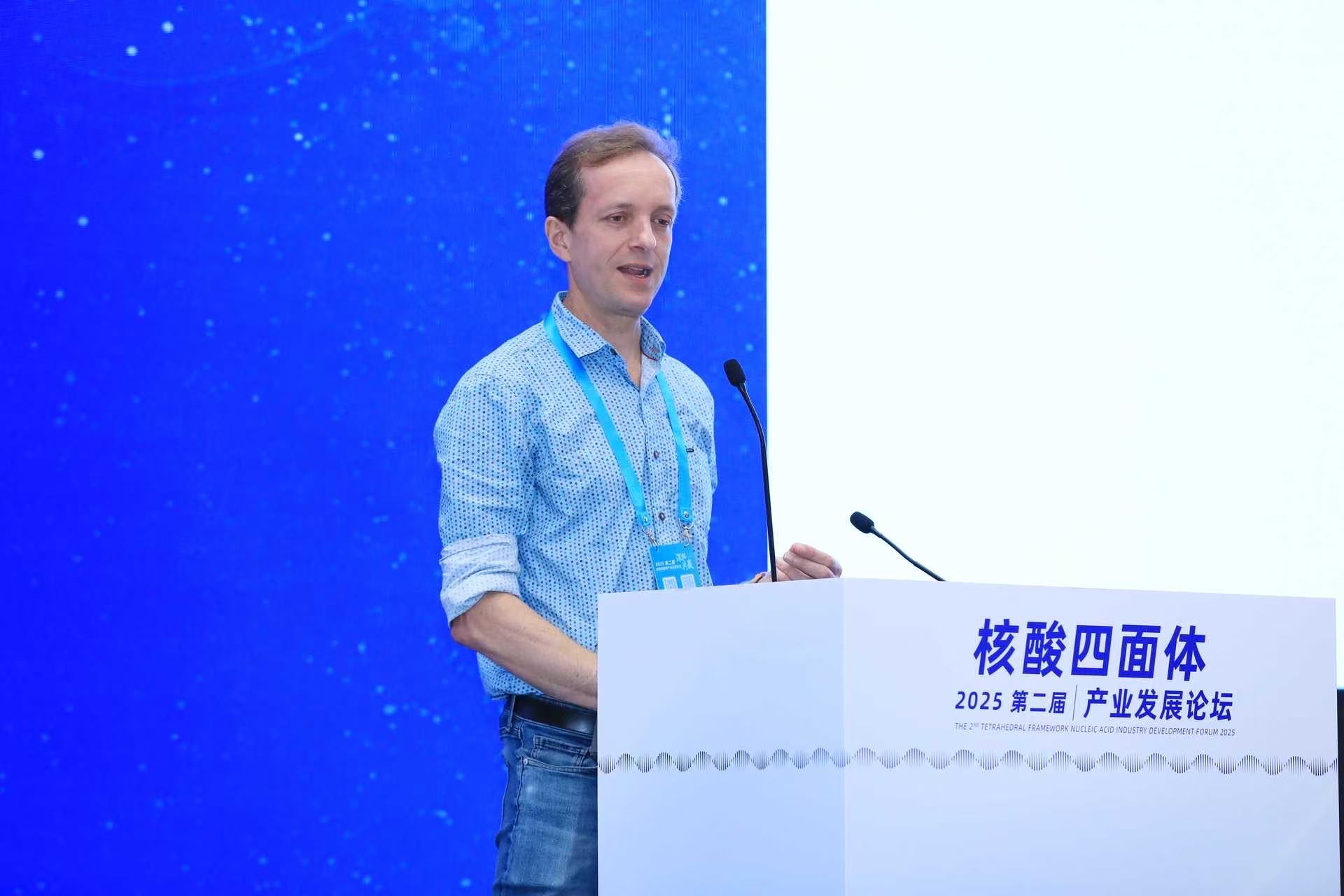
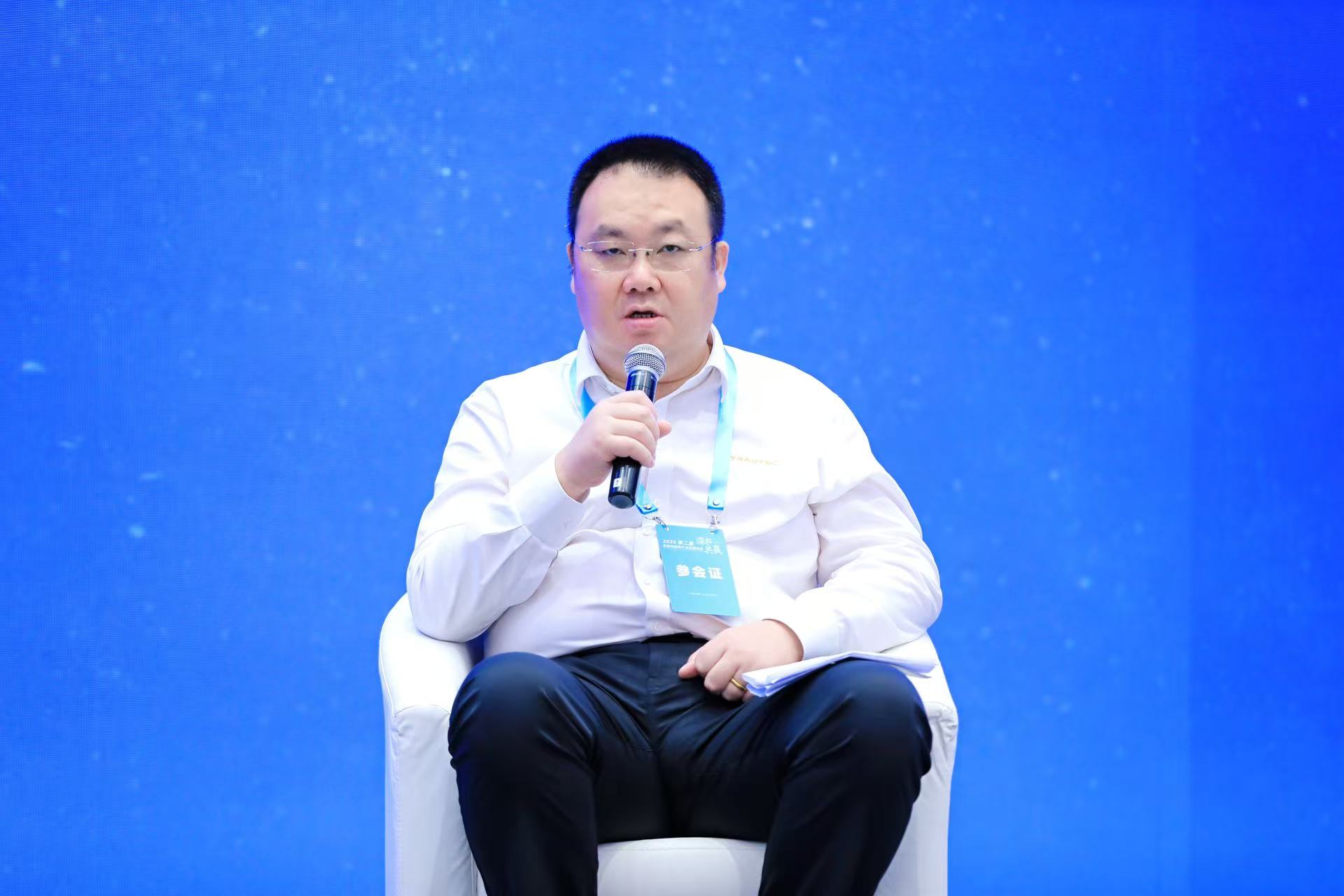
In the field of skin and hair follicle health, tFNA loaded with traditional Chinese medicine monomers has shown effective targeting of hair follicles. Experimental data reveal up to a 150% increase in follicular activity. Thanks to the platform’s modular design and AI-assisted screening, the product development cycle has been significantly shortened — from concept to market in just about 90 days — making it a pioneering example of tFNA’s innovative application in personal care.
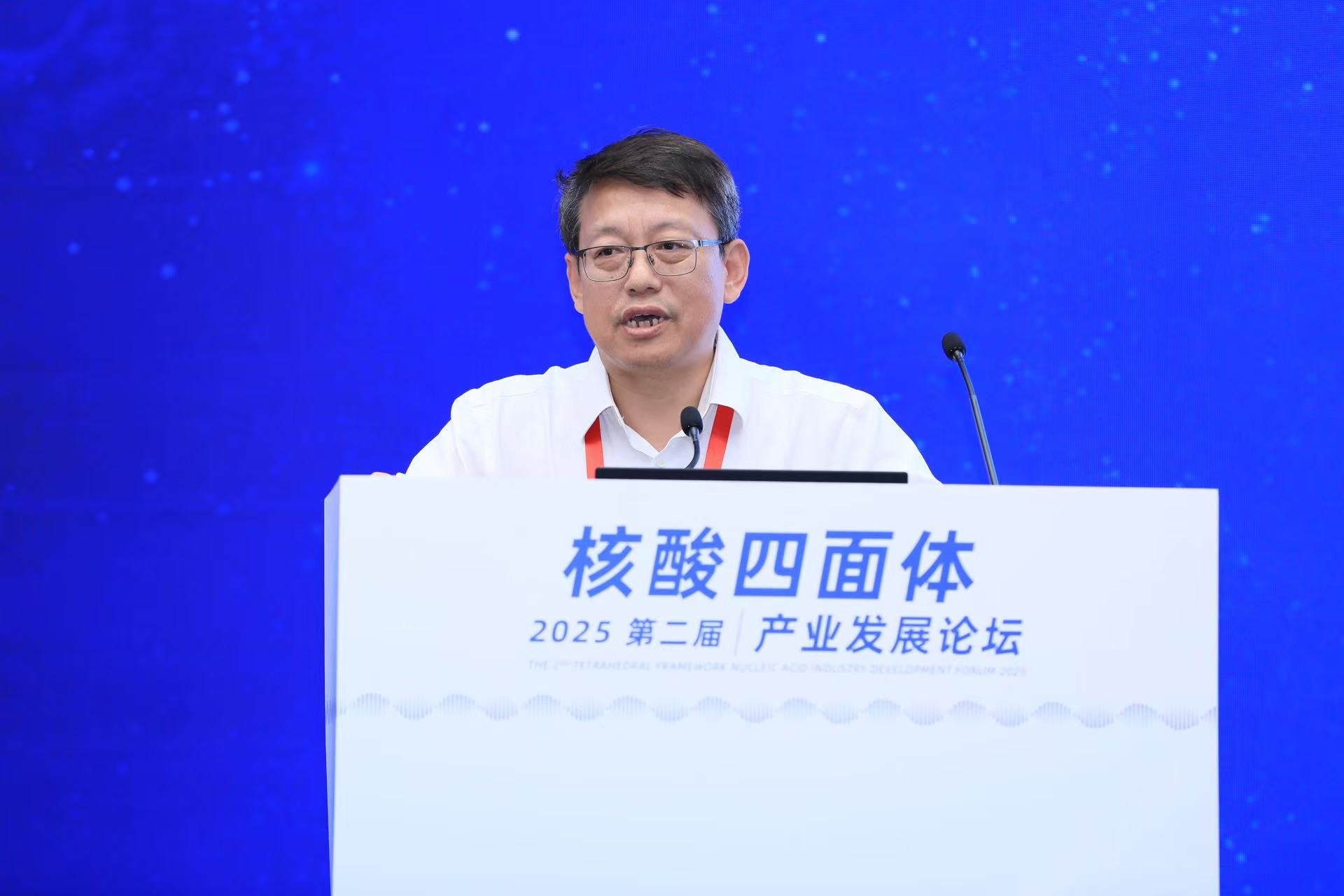

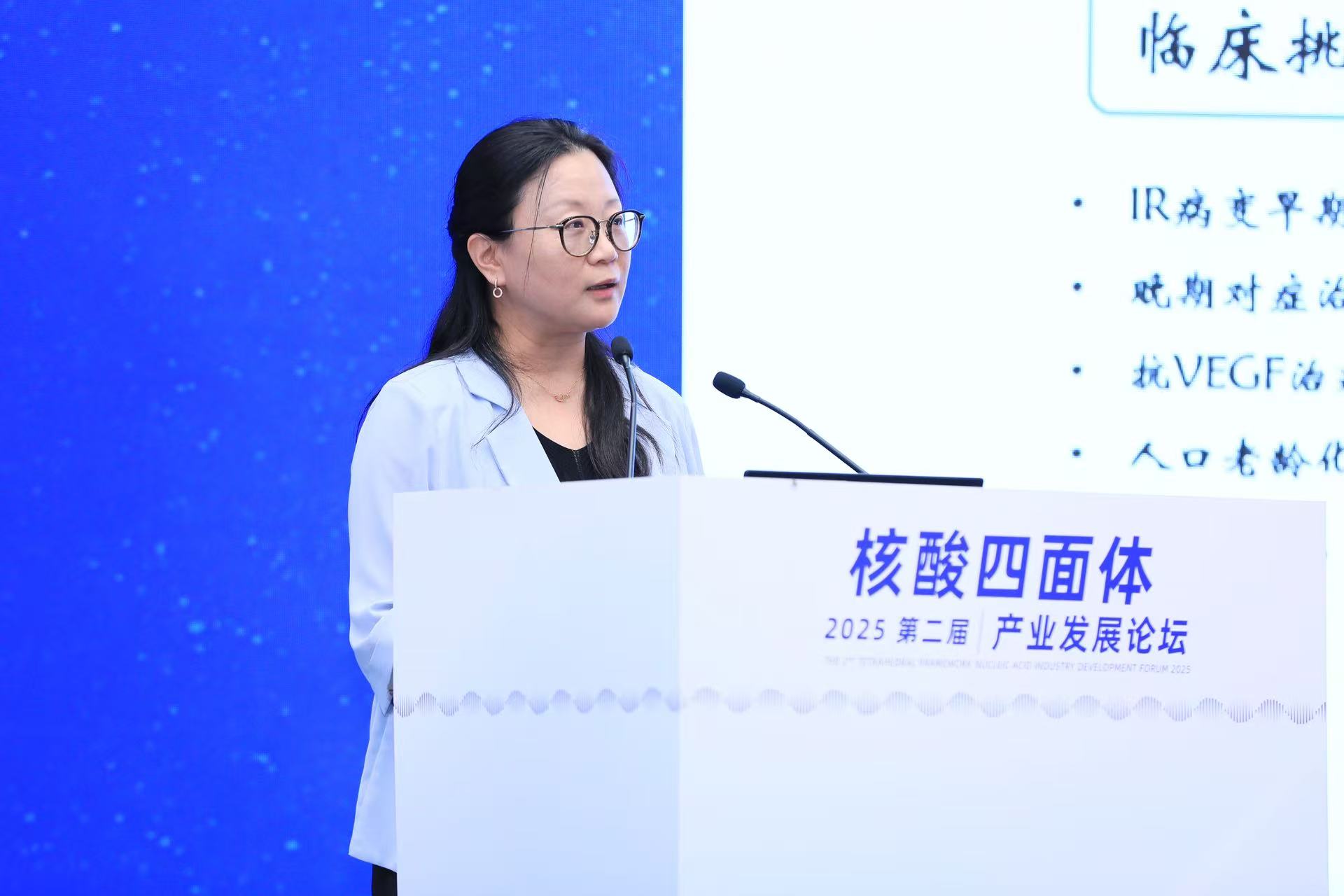
Alongside these technological breakthroughs, Chengdu is emerging as a vibrant hub for nucleic acid industry development. As the forum's organizer, Chengdu Yunhai Tetrahedral Framework Biotechnology Co., Ltd., built in collaboration with Professor Yunfeng Lin’s team and the State Key Laboratory of Oral Diseases, has established a joint engineering research center. The company continues to produce tFNA-related patents, maintaining comprehensive technological leadership and driving the direction of industry transformation. Through patent licensing, equity-based IP transfer, and other mechanisms, it actively shares cutting-edge research outcomes with global partners, promoting the commercialization and industrialization of framework nucleic acid technology.

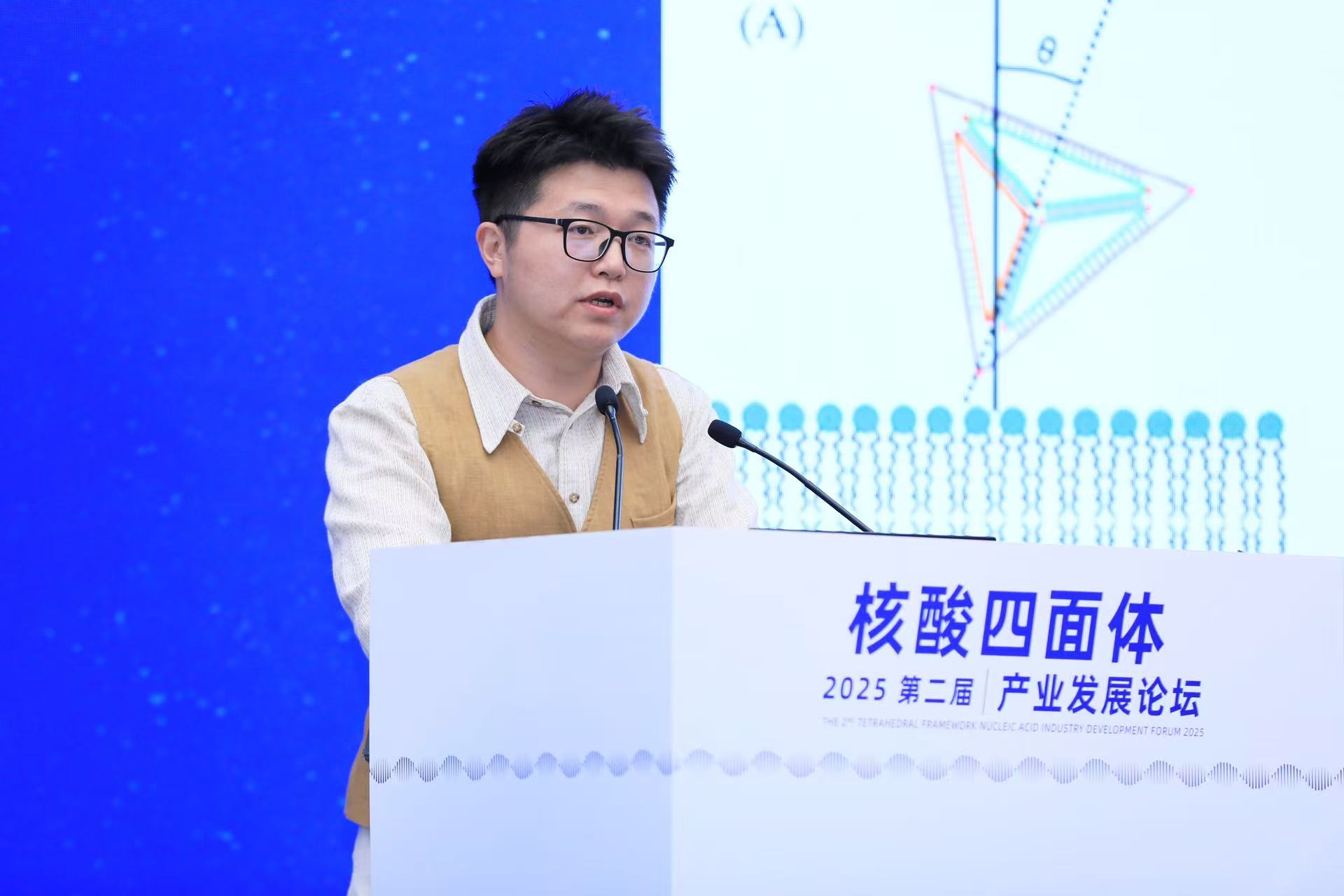
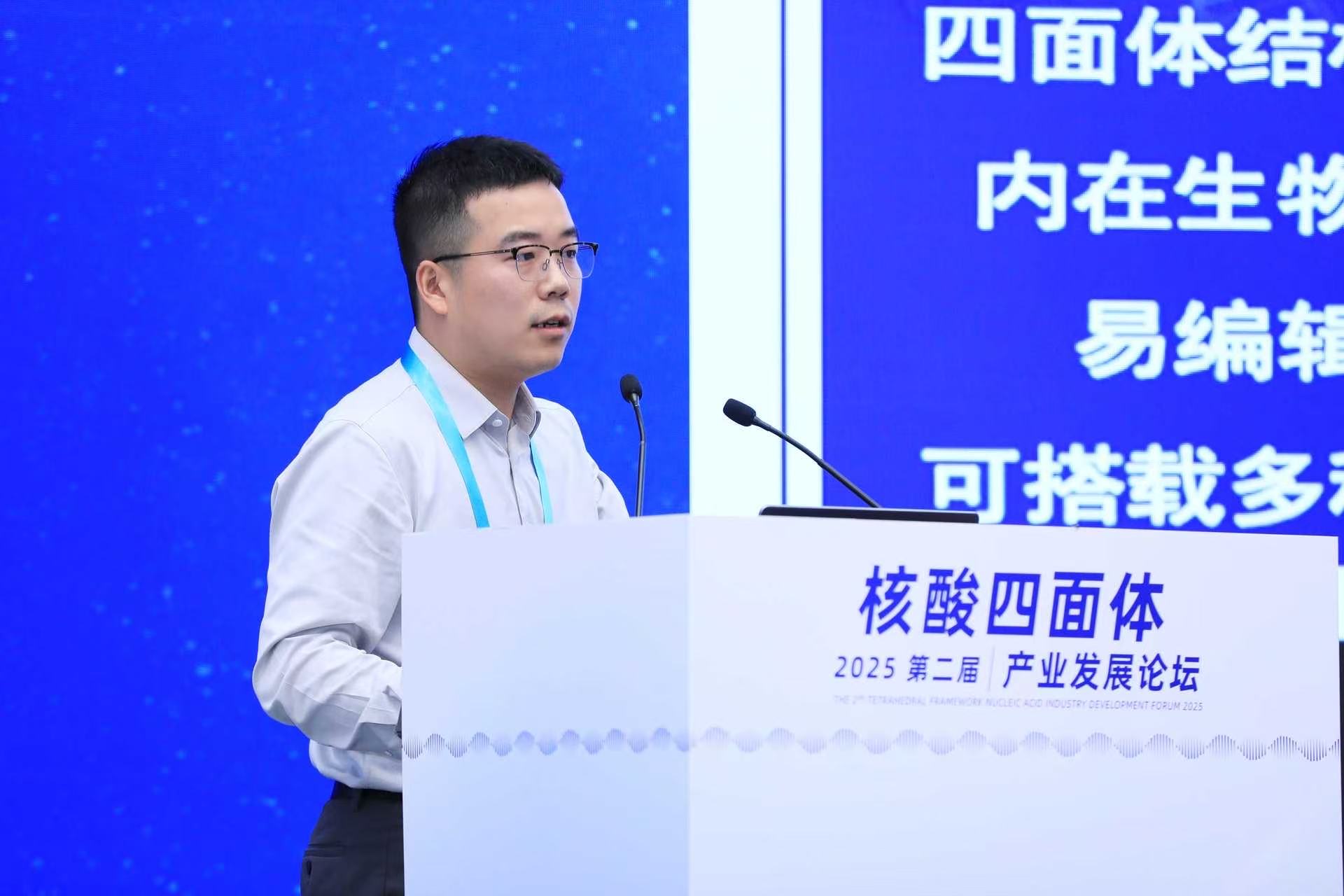
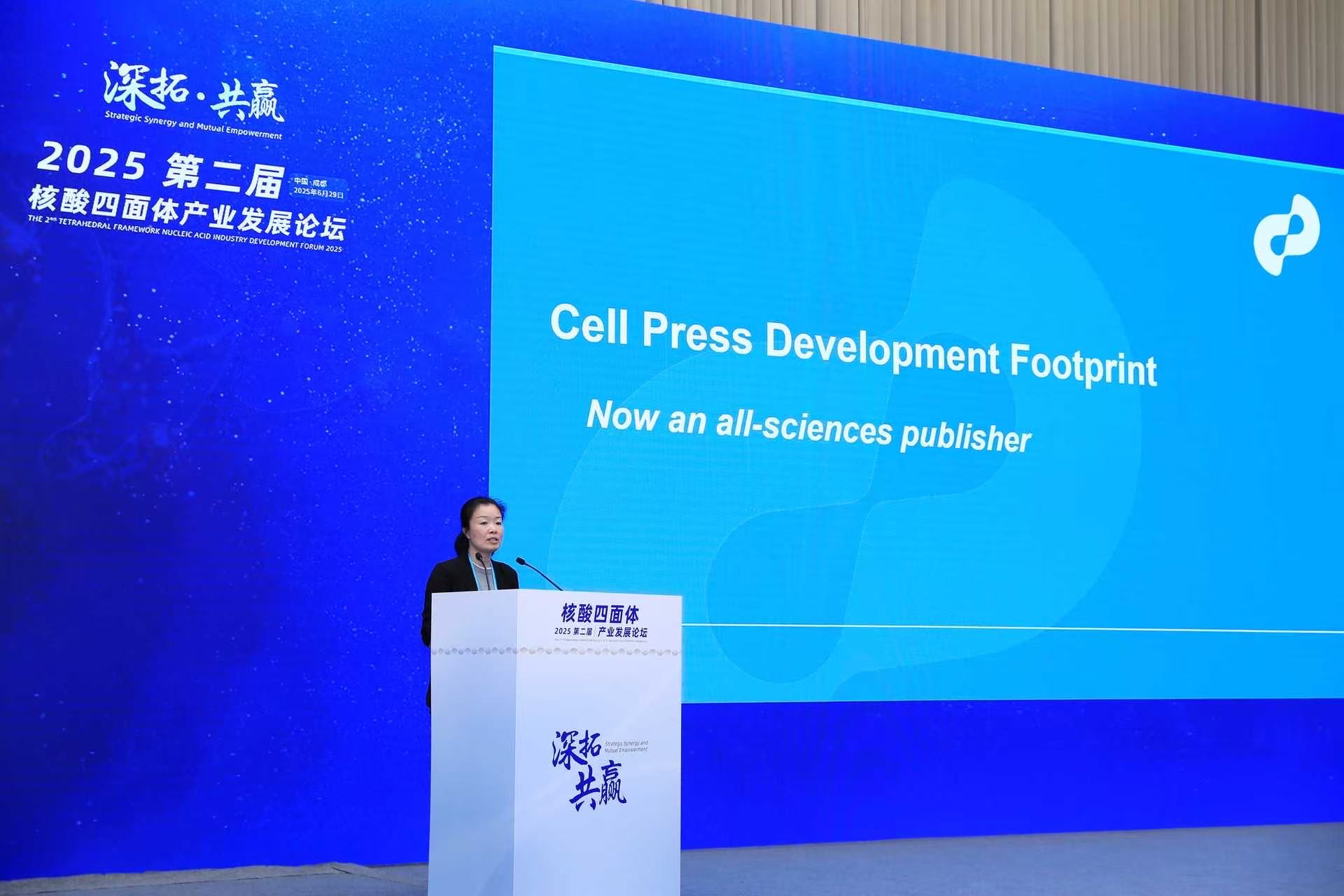
“This forum is not only a high-level platform for academic exchange but also an industry engine that drives cooperation, consensus, and rapid translation,” said a representative from Chengdu Yunhai Tetrahedral Framework Biotechnology Co., Ltd. “We hope to further strengthen the collaborative mechanisms among government, academia, and industry through this event, accelerate breakthroughs in core technologies, and empower China’s nucleic acid drug industry to achieve leapfrog development.”
